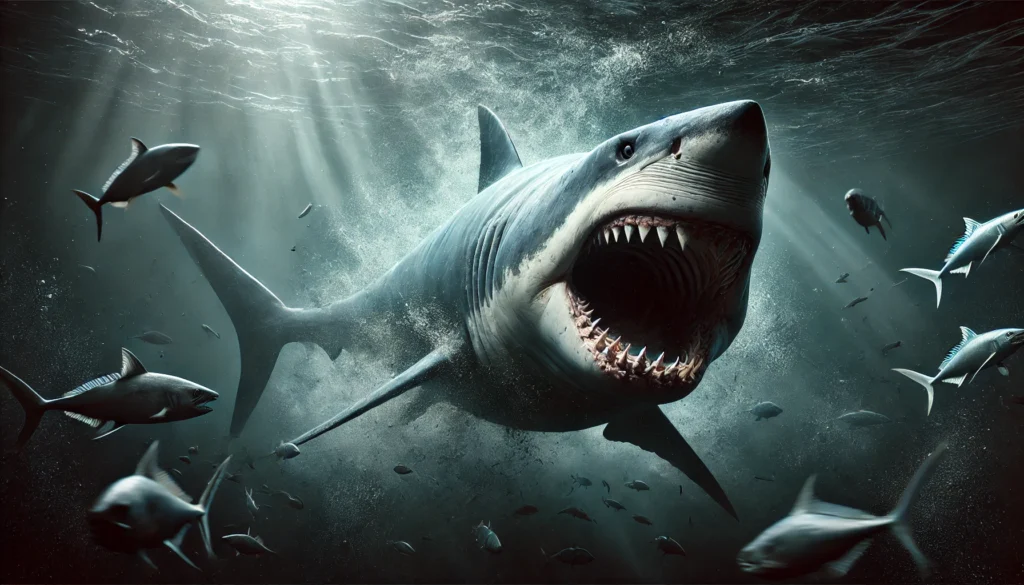“What happened to the Megalodon? The Megalodon was a giant shark that once swam in our oceans. Around 3 million years ago, the Earth’s temperature fell. The Megalodon was unable to adapt to the colder environment. Its food supply depleted, and eventually, it became extinct. Its close cousin, the great white shark—roughly a third of its size—adapted much better by relocating, something the Megalodon was unable to do.
Moral of the story? You can be the most ferocious predator in the world, literally the biggest shark in the ocean, but if you are unable to adapt in the face of cataclysmic changes in the environment, you become extinct. Cataclysmic changes like the one we are faced with today: the advent of artificial intelligence.”
It was Stockholm’s Grand Central Hotel, the city’s flagship venue, with a majestic event room that felt more suited to a theatrical performance than presentations on financial markets—which, incidentally, was the theme of the conference. Little did the audience know that what they were about to witness was perhaps more in keeping with the dramatic setting of the room: a touch of drama they weren’t expecting.
My presentation was on investing in artificial intelligence. Upon climbing the stage, I swiftly flicked the screen from the holding slide with the presentation title to the first slide: a fierce, gigantic shark with its jaws wide open. Then, I launched into the sequence above.
Later that day, I was tagged in LinkedIn posts by attendees who cited this story, perfectly grasping my point about the importance of adapting in the face of change. The story had achieved its intended goal. And there are several reasons why it left a lasting impression.
- Surprise Creates Engagement
It was a highly unusual way for a presenter at an investment conference to begin. The element of surprise immediately got people engaged. Most presenters start by introducing themselves, stating their job title, and repeating the title of their presentation—something the moderator has often already done. This wastes the most precious first few seconds by telling the audience what they already know. Instead, it is much better to dive right in.
- Vivid Imagery Amplifies the Message
The story was paired with a visually captivating—and perhaps even intimidating—image of a giant shark with its jaw wide open. Such slides and imagery are rare at investment conferences, which made it stand out even more.
- Stories Are Memorable
Humans make sense of the world through stories. Yet, so often, business pitches bombard audiences with data they will never remember. Launching straight into a story grabs attention because it has a sequence of events, drama, suspense, and, most importantly, a narrative arc which helps us make sense of the world around us. If delivered with the right intensity, even a compact story like the one I shared is hard to forget.
But for this approach to work, the presenter must do two things:
- Keep it short. My entire presentation was meant to be twenty minutes long. As essential as the opening sequence was, it needed to be concise. A 15-minute tutorial on the Megalodon would clearly not work.
- Establish relevance. The story’s connection to the presentation’s main goal must be clear. This not only engages and entertains the audience but also ensures they understand your point and are eager to hear what else you have to say.
How you start your presentation can make a huge difference. Be bold. Be creative. Bring out your Megalodons.
